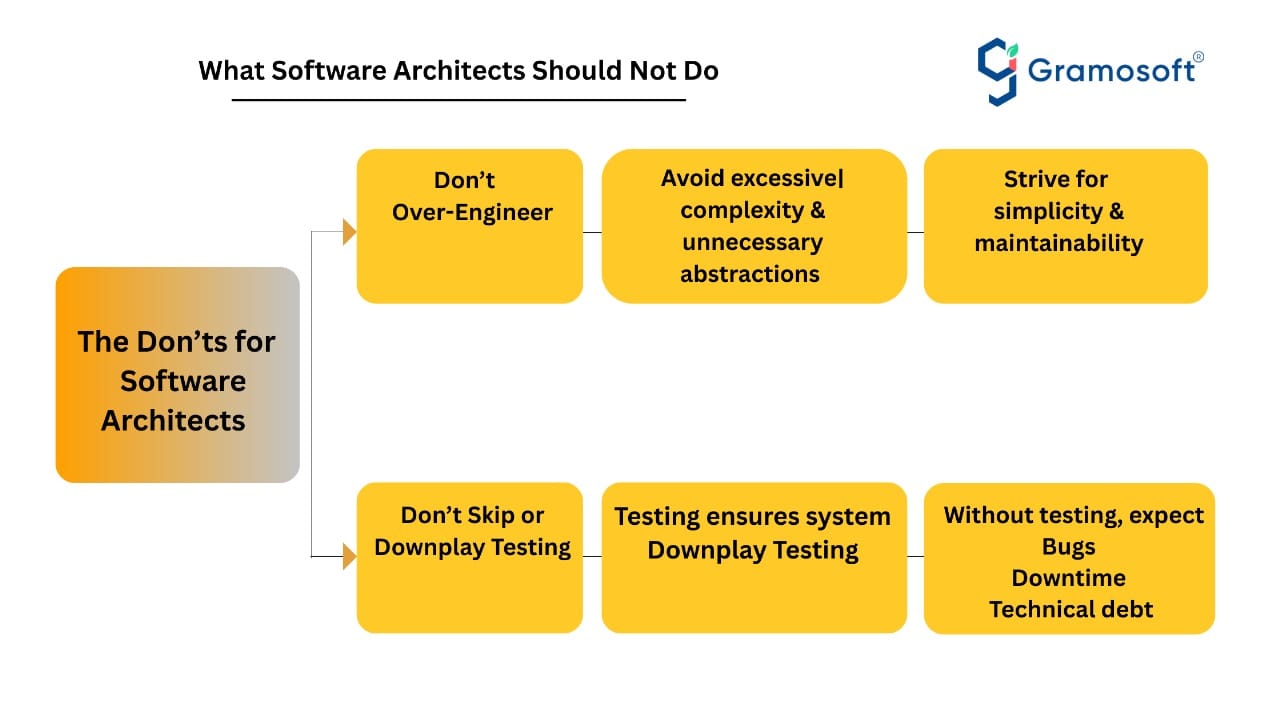The Do’s and Don’ts for Software Architects
In the fast-paced world of software development, the role of a software architect is more than just technical — it’s strategic. Architects are the crucial link between business objectives and engineering execution. The choices they make can shape the trajectory of a project, influencing everything from performance and scalability to user satisfaction and long-term maintainability.
Being a successful software architect demands a powerful mix of deep technical knowledge, big-picture thinking, and excellent communication skills. Architects must navigate complex systems, anticipate challenges before they arise, and guide teams toward sustainable, future-proof solutions.
But even seasoned architects can fall into common traps that undermine their goals. Whether you're just stepping into the role or have years of experience under your belt, this guide outlines essential do’s and don’ts to help you stay on course.
Best Practices: The Do’s for Software Architects
1. Understand the Business Landscape
Before diving into system design, take the time to understand the broader business goals. Aligning technical solutions with business strategy ensures that your architecture delivers real, measurable value — not just elegant code.
2. Design for Scalability and Performance
Anticipate growth. A well-architected system should handle increased load without extensive rewrites. Optimizing for performance ensures a responsive user experience, especially under pressure.
3. Promote Modularity and Reusability
Breaking systems into loosely coupled, well-defined modules not only simplifies development and maintenance but also encourages code reuse. This leads to faster delivery and more resilient systems.
4. Keep Architecture Well-Documented
Documenting architectural decisions, diagrams, and justifications is vital. Good documentation helps teams onboard quickly, facilitates handovers, and reduces confusion over time.
5. Encourage Cross-Team Collaboration
Work closely with developers, designers, product owners, and fellow architects. Open dialogue leads to better decisions, earlier problem detection, and stronger team alignment.
6. Stay Ahead with Technology Trends
The tech world doesn’t stand still — neither should you. Stay current with emerging technologies, tools, and industry shifts. This enables smarter decisions and keeps your architecture modern.
7. Prioritize Security from Day One
Security shouldn't be an afterthought. Incorporate it into your designs early, and update your approach regularly to address evolving threats.
8. Address Technical Debt Early
Unmanaged technical debt can snowball, making systems harder to maintain and evolve. Be proactive about identifying and resolving it before it becomes a roadblock.
9. Don’t Forget User Experience
A great architecture supports a seamless user journey. Partner with UX experts and factor user needs into your decisions. After all, the end goal is creating software people love to use.
10. Embrace Change and Be Flexible
Adaptability is a core skill. Stay open to new ideas, frameworks, and methodologies. Being flexible allows you to respond effectively to changing requirements and opportunities.
Common Pitfalls: The Don’ts for Software Architects
1. Don’t Over-Engineer
Resist the urge to build overly complex systems with excessive layers or unnecessary abstractions. Complexity increases maintenance overhead and often solves problems that don’t exist. Strive for elegant simplicity.
2. Don’t Skip or Downplay Testing
Testing is essential to ensure system stability and reliability. Failing to integrate thorough testing into your architecture can result in costly bugs, downtime, and technical debt.

Wrapping Up
Software architecture is a discipline that blends creativity with structure, and vision with pragmatism. While no two projects are exactly alike, the foundation of great architecture remains rooted in thoughtful design, clear communication, and a mindset of continuous improvement.
By following these best practices — and steering clear of common pitfalls — software architects can build scalable, maintainable systems that not only meet business objectives but also deliver a seamless user experience.
Whether you're designing a brand-new solution or evolving an existing platform, always remember:great architecture isn’t just about writing code — it’s about making intentional, strategic decisions that lead to long-term success.
At Gramosoft, we believe that proper software architecture is the backbone of every successful software product.Our approach emphasizes designing systems that are robust, scalable, secure, and aligned with business goals from day one. Because at the end of the day, it’s not just about building software — it’s about building the right software, the right way.

 Aug 9, 2025
Aug 9, 2025